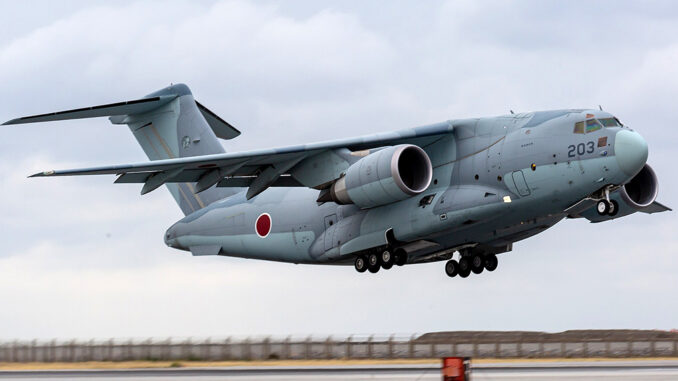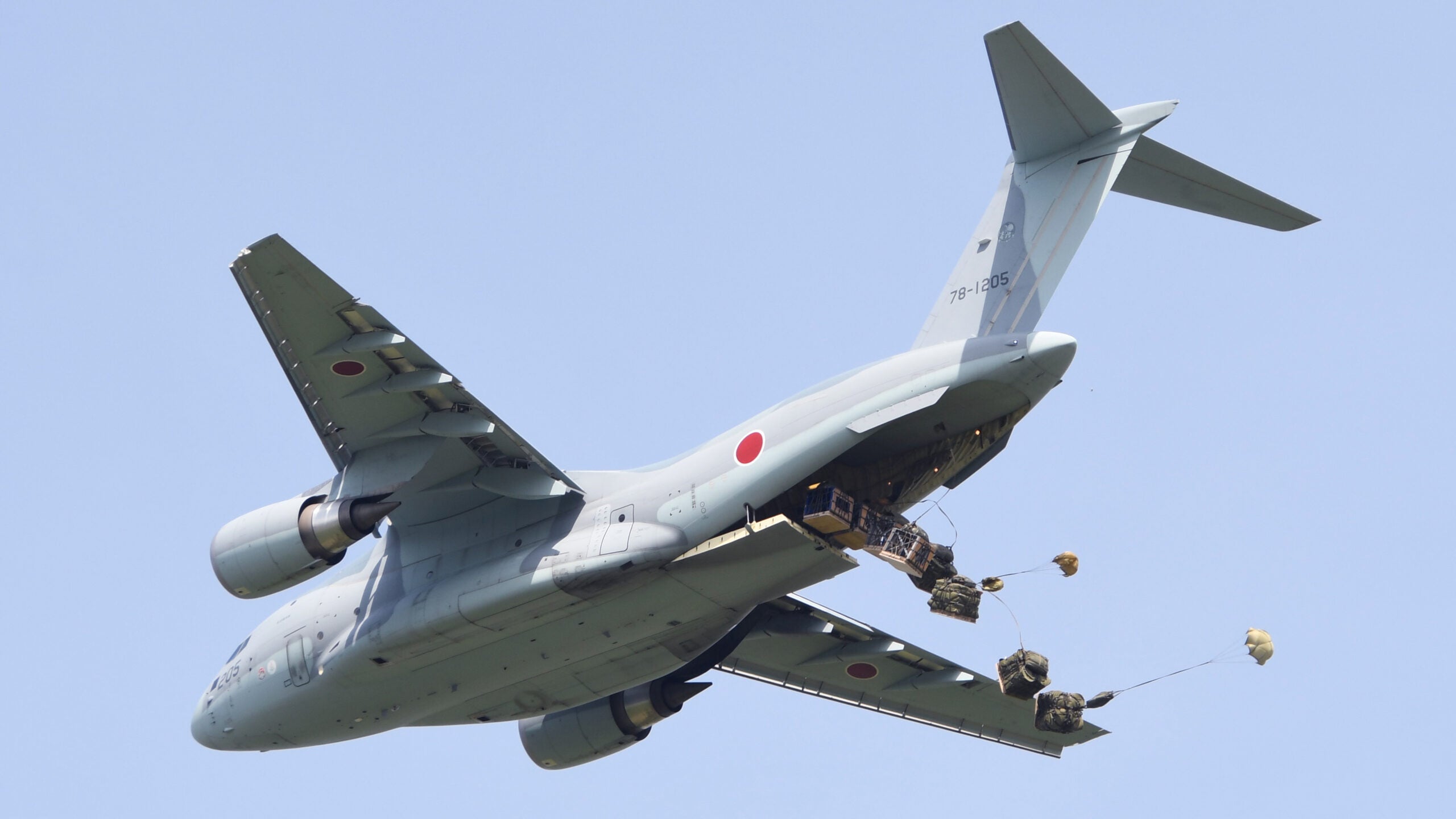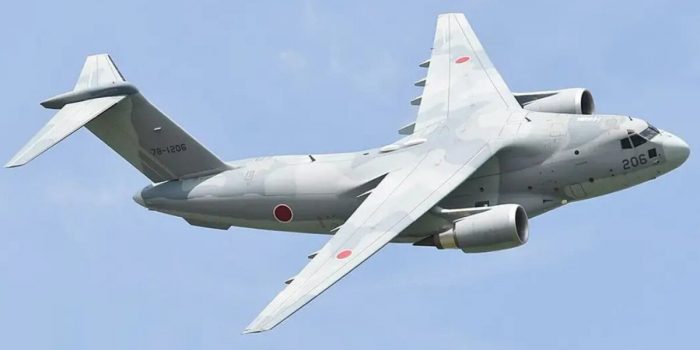In a recent report by The Japan Times, Japanese military officials have revealed their deliberations on enhancing the capabilities of the nation’s Kawasaki C-2 cargo planes by outfitting them with cutting-edge cruise missiles. This strategic move, if pursued, is believed to signal the potential emergence of a new trend in military aviation. The focus lies on incorporating air-launched standoff missiles into the arsenal, thereby expanding the country’s long-range strike capabilities.
Analogous to the “Rapid Dragon” missile system utilized by the United States, this contemplated strategy could potentially offer an expedient and cost-effective means to bolster the Japanese Air Force’s potency. This enhancement would be achieved without the need for substantial investments in acquiring new aircraft, such as bombers.

Distinguishing the C-2 aircraft is its impressive transport capacity, capable of ferrying up to 110 personnel and a substantial cargo load of 20 tons. Moreover, the aircraft boasts an extended operational range of up to 4,722 miles (7,600 km). With a higher missile carrying capacity compared to most fighter planes and an extended flight duration, the C-2 exhibits formidable attributes. Presently, Japan boasts a fleet of 15 operational C-2s.

Insiders, who have chosen to remain anonymous, have intimated that Japan’s Ministry of Defense is considering the integration of long-range missiles onto the C-2 platform, intended for potential counterstrike operations against adversary installations. Furthermore, reports from The Japan Times suggest that the C-2 aircraft might potentially be adapted for missile launch through a drop-and-power-up mechanism, obviating the necessity for extensive aircraft modifications. While the precise classification of missiles remains undisclosed, plausible contenders exist.
Japan’s prospective course of action includes the acquisition of off-the-shelf missile systems for integration with the C-2 aircraft. A strong contender for this role is the US-manufactured Joint Air-to-Surface Standoff Missile (JASSM) family of cruise missiles, renowned for their ability to engage targets at a distance of approximately 559 miles (900 km). These missiles have already been adopted for use on Japan’s F-15 “Eagle” fighter aircraft, enhancing their precision strike capabilities as part of modernization efforts.
An alternative under consideration is Japan’s indigenous Type 12 anti-ship missile, presently in developmental stages. While initially deployed in a land-based capacity, efforts are underway to adapt this missile for air-launched deployment, potentially achieving ranges of around 621 miles (1,000 km). This sophisticated variant, characterized by stealth attributes, is projected for readiness by fiscal year 2028. However, given the timeline, the JASSM system emerges as a pragmatic short-term option.
This deliberation paves the way for Japan’s potential adoption of the “Rapid Dragon” concept, reminiscent of US developments. This concept entails the strategic arrangement of multiple munitions within modular frameworks, facilitating swift loading onto cargo aircraft. Characterized by an automated targeting system aggregating external data sources for missile guidance, the system exhibits scalability and adaptability across various platforms. Extensive testing by the US Air Force involving aircraft such as the C-17 “Globemaster III” and specialized C-130 “Hercules” variants has underscored its viability.
With a fiscal allocation of 3.5 billion yen (equivalent to approximately $25 million), slated for capability development in the current fiscal year, Japan’s progression in this direction remains steadfast. Pending successful technical research, full-scale production is envisaged post-2024. The envisaged implementation of the “Rapid Dragon” concept could potentially amplify Japan’s long-range striking capabilities, especially concerning high-stakes scenarios involving China, Russia, or North Korea.


